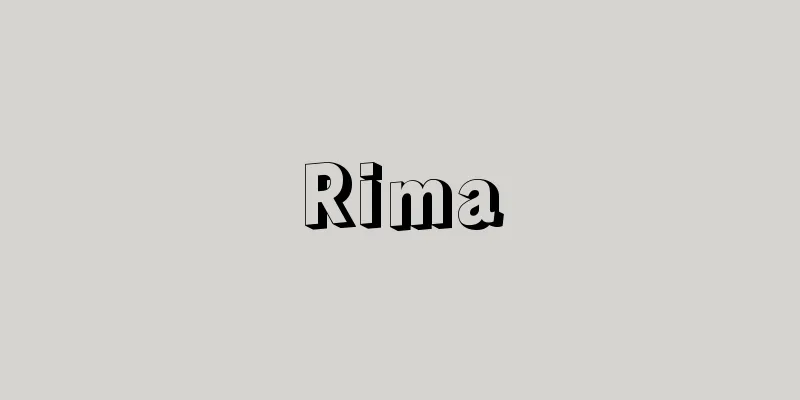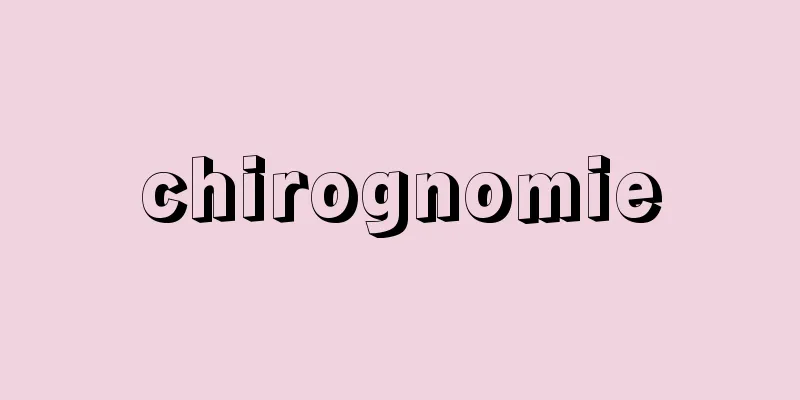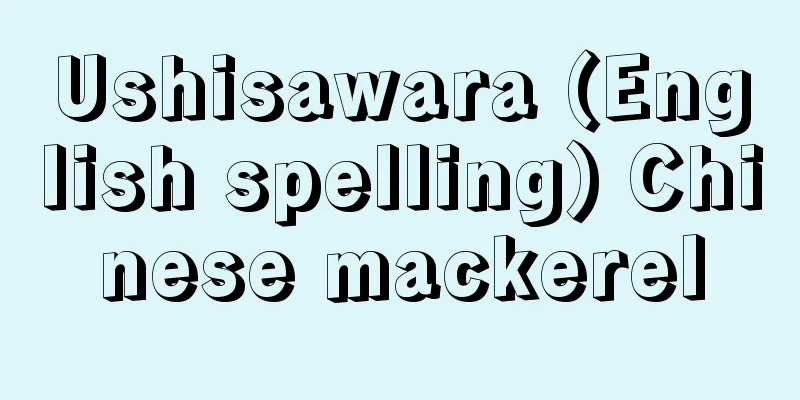Course of study - Course of study

|
The Minister of Education, Culture, Sports, Science and Technology announces the curriculum standards. It is published in the Official Gazette as a notice. The Course of Study indicates the standard items from the national standpoint regarding what subjects and activities should be taught in which grades and how. Therefore, when creating an educational curriculum, schools are required to consider the actual conditions of the region and school, and the development and characteristics of the children and students, and to conform to the Course of Study. As of 2000, the Course of Study has been announced for elementary, junior high and high schools, and for the elementary, junior high and high school divisions of schools for the blind, deaf and special needs. The Course of Study also serves as the standard for the creation and certification of textbooks used in the above schools. The standards for the curriculum of kindergartens are announced as the "Kindergarten Education Guidelines," and for the kindergarten divisions of schools for the blind, deaf and special needs, they are announced as the "Kindergarten Education Guidelines." [Mitsutake Ito] Legal basisThe legal basis for the Course of Study being the standard for the educational curriculum is as follows. Article 20 of the School Education Act states that "matters relating to elementary school subjects shall be determined by the supervisory authority..." and Article 106 states that "the supervisory authority for Article 20...shall be the Minister of Education, Culture, Sports, Science and Technology," stipulating that the Minister of Education, Culture, Sports, Science and Technology determines the subjects, and based on this, Article 25 of the Enforcement Regulations of the School Education Act stipulates that "elementary school curriculum...shall be based on the elementary school Course of Study Guidelines separately announced by the Minister of Education, Culture, Sports, Science and Technology." The same provisions exist for junior high schools, high schools, and schools for the blind, deaf, and disabled in Articles 38, 43, and 73 of the School Education Act, and Articles 54-2, 57-2, and 73-10 of the Enforcement Regulations. [Mitsutake Ito] Establishment and subsequent developmentsThe first Course of Study was created in 1947 by the Ministry of Education (now the Ministry of Education, Culture, Sports, Science and Technology) with reference to the American Course of Study. It was divided into a general edition and a subject edition for elementary, middle and high schools and was labeled as a "trial draft." This Course of Study was revised in 1951, but the revised version was also a "trial draft." These Courses of Study (trial drafts) were also "curriculum standards" based on Article 25 of the Enforcement Regulations of the School Education Act, but their nature was to be a guide, reference and suggestion for teachers, and it was expected that teachers would use the Course of Study as a guide to develop the most suitable curriculum for each school through their own independent research and creativity. At that time, the Course of Study could be created not only by the Ministry of Education but also by the Board of Education, but from 1952, it was decided that the Ministry of Education would be the only one to create the Course of Study. [Mitsutake Ito] From the draft to the Ministry of Education NotificationThe nature and structure of the Course of Study changed significantly from the late 1950s. In the 1980 revisions to the high school general curriculum and elementary and junior high school social studies curriculum, the word "tentative" was removed, and no "tentative" guidelines were created thereafter. The content also changed from the empirical education stance that had been the basis up until then to one that emphasized systematic teaching of subjects. The Course of Study guidelines from 1983 onwards were presented in the form of "Ministry of Education Notices," and in the same year the elementary and junior high school moral education section and the elementary and junior high school Course of Study Guidelines were published in the same year, and in 1980 the high school Course of Study Guidelines were all published in the form of notices. Subsequently, elementary schools were revised in 1968, 1977, 1989 and 1998, junior high schools in 1969, 1977, 1989 and 1998, and high schools in 1970, 1978, 1989 and 1999, with revisions occurring roughly every 10 years. As for schools for the blind, deaf and special needs, the elementary school version of the Course of Study for Schools for the Blind and Deaf was published in 1964, and additions and revisions were made one after another, until all versions for schools for the blind, deaf and special needs were completed in 1979. The Course of Study guidelines after the 1958 revision no longer have separate volumes for the general section and the subject sections; for example, the elementary and junior high school Course of Study guidelines for 1968 and 1969 present standards for general provisions, each subject, ethics and special activities in a single volume, and the standards are not to be chosen arbitrarily by schools or teachers, but are legally binding. Each revision of the Course of Study has been made in accordance with national policy based on the report of the Curriculum Council, which was established in 1950, but the Council was taken over by the Curriculum Subcommittee of the Central Council for Education (newly established) when the Ministry of Education, Culture, Sports, Science and Technology was established as part of the central government reorganization in January 2001. The 1958 revision aimed to strengthen and improve moral education, basic academic ability, science and technology education, and education tailored to career characteristics, while the main policy of the 1968 revision was to modernize the content of education and diversify high school education in order to support advances in science and technology and high economic and social growth. [Mitsutake Ito] 1977 RevisionThe revisions made in 1977 (Showa 52) were based on the policy of amending the curriculum standards to allow for a relaxed and fulfilling school life in response to the overcrowding of teaching materials and the increased learning burden on children and students due to the modernization of educational content, the high school advancement rate exceeding 90%, and the mandatory attendance of special needs schools from 1979. Based on this policy, the educational goals and content of each subject were carefully selected, and the scope of educational activities based on the independent judgment, discretion, and creativity of schools and teachers was expanded, so the standards were organized and outlined, and a considerable degree of flexibility was allowed in their handling. [Mitsutake Ito] 1989 RevisionThe 1989 revision inherited the standards set out in the 1977 revision, as well as the strengthening and outline of the goal of realizing a relaxed and fulfilling school life, and was based on the 1987 report of the Curriculum Council, which took into account the recommendations of the 1983 report of the Central Council for Education's Subcommittee on Educational Content, etc., and the report of the Provisional Council for Education (Rinkyo-in) from 1984 to 1987. The basic aim of the 1989 revision was to develop rich-minded individuals who can respond to social changes in the 21st century, based on the foundation of lifelong learning, while taking into consideration future changes in society and the accompanying changes in the lives and attitudes of children and students. More specifically, (1) social studies and science were abolished in the first and second years of elementary school, and a new subject, life studies, was established in their place, (2) the number of elective subjects in junior high schools was increased and the range of choices was widened, (3) social studies in high schools was reorganized into geography and history (geography and history) and civics, and world history was made a compulsory subject, as well as home economics, for both boys and girls, and (4) it was made mandatory to raise the flag and sing the national anthem at entrance and graduation ceremonies for elementary, junior high, and high schools. [Mitsutake Ito] 1998/99 RevisionIt was also called the new Course of Study Guidelines, as it was the first complete revision in about 10 years since 1989. Revisions and announcements were made for elementary schools and junior high schools in 1998, and for high schools and schools for the blind, deaf and special needs in 1999. It went into effect in April 2002 for elementary and junior high schools, and the elementary and junior high departments of schools for the blind, deaf and special needs. It will go into effect in 2003 for high schools and the senior high departments of schools for the blind, deaf and special needs. The revised curriculum guidelines are characterised by their aim to "foster the ability to live in a relaxed environment" in anticipation of the introduction of a full five-day school week from 2002. As class hours are reduced, the main aim is to encourage each school to use its own ingenuity to foster students' ability to learn and think for themselves, thereby ensuring that they acquire a solid grasp of the basics. (1) The standard length of a unit of class time in elementary and junior high schools, 45 and 50 minutes, has been abolished and each school is free to set its own length. In high schools, the previous standard of 50 minutes has also been revised, leaving each school to set its own appropriate length while ensuring sufficient class time for each subject. As a result, for example, junior high school science classes that include experiments can now be 75 minutes long and English classes can be 25 minutes long, every day. (2) In elementary schools, emphasis is placed on providing thorough instruction tailored to each individual student so that they can master the learning content. Examples include individual instruction, group instruction, repeated instruction, and cooperative instruction between teachers. In junior high schools, of the above examples, repeated instruction has been changed to "instruction according to the level of mastery of the learning content." In high schools, instruction will be enhanced by devising and improving teaching methods and systems, such as individual instruction, group instruction, cooperative instruction by teachers, and flexible class organization according to the student's level of mastery, depending on the circumstances of the school and the students. It is hoped that all of these examples will be useful in enriching "easy-to-understand lessons." (3) The content of lessons in compulsory education at elementary and junior high schools has been carefully selected. In elementary schools, arithmetic has been reduced by 25%, science by 24.7%, and in junior high schools, mathematics by 34% and science by 26%. The same is true for other subjects, with the content reduced by around 30%. It is expected that this will allow all students to learn the new material by spending 80% of the lesson time on it and dedicating the remaining 20% to repetitive learning, etc. (4) In high schools, the number of credits required for graduation has been reduced from 80 to 74, and the total number of credits for general education subjects in general, specialized, and integrated courses has been reduced to 31. Of these 31 credits, the subjects of Japanese language, geography and history, civics, mathematics, science, health and physical education, art, foreign language, home economics, and information are all compulsory, but for other subjects and courses, multiple electives with a standard number of 2 credits are available. This is to allow students to choose basic subjects in order to ensure that the diverse students, whose high school advancement rate has reached 97%, acquire basic academic skills. Also noteworthy is the addition of "information" to the general education subjects. In addition, each school will set up subjects and courses that it determines, and will study subjects that are not included in the curriculum guidelines. The program has become more diverse, including university-level fields such as "international" and "culture." (5) The time for "comprehensive study" is positioned as the focal point of the revision to "foster life skills." The standard is more than two hours a week for elementary school students from the third grade onwards, more than two hours a week for junior high school students, and 105 to 210 unit hours for senior high school students, which are allotted time when textbooks are not used. The main goal of instruction is to develop the qualities and abilities to find problems, learn, think, make independent decisions, and solve problems better. It is also to help students acquire ways of learning and thinking, develop an attitude of independently and creatively tackling problem solving and inquiry activities, and enable them to think about their own way of life. Based on the above, activities are carried out according to actual circumstances regarding cross-cutting issues such as international understanding, information, the environment, welfare and health, issues based on the interests and concerns of the children and students, and issues tailored to the characteristics of the region and school (in high schools, issues that encourage reflection on one's own identity, lifestyle and career path). Furthermore, as part of learning linked to international understanding, foreign language conversation can be introduced into elementary schools, allowing students to become familiar with foreign life and culture, making it an experiential learning experience appropriate for the elementary school level. [Mitsutake Ito] Basic IssuesThe basic problem with curriculum guidelines is the extent to which they are legally binding as standards for the educational curriculum. There are the following ways of thinking about this: (1) Based on the premise that the state has the responsibility to guarantee the people's right to education, the curriculum guidelines established in the form of "public notices" based on the School Education Act and its Enforcement Regulations are statutory orders and, although their strength varies from matter to matter, they are legally binding overall. (2) Since the involvement of educational administration in school education is limited to the creation of necessary conditions, only the outline standards related to the creation of necessary conditions are legally binding in the curriculum guidelines. (3) School education should be carried out through the free and independent activities of teachers, and coercion by the state is not permitted. Therefore, even if the Course of Study takes the form of a "notification," it is a "notification" of a public relations nature and cannot have legal binding force. Therefore, the Course of Study is an instructional and advisory document prepared by the Ministry of Education, Culture, Sports, Science and Technology. Such differences in thinking about legal binding have been an important point of contention in education litigation (lawsuits and lawsuits over the Hokkaido Academic Achievement Test, Ienaga textbooks, Fukuoka Denshukan High School, etc.). [Mitsutake Ito] Issues with the flag and anthemThe two issues that have been widely discussed regarding the Course of Study are how to handle the national flag and the national anthem, and how to deal with the five-day school week. The Course of Study in 1958 stated that it was desirable to raise the national flag and sing the national anthem on national holidays, and subsequent revisions made it mandatory to teach them at entrance and graduation ceremonies, which sparked much debate. The main issues at this point were: (1) the fact that the Hinomaru flag and the Kimigayo national anthem both lacked a basis in positive law and were merely accepted as customs; (2) the Hinomaru and Kimigayo were strongly associated with war in the history of Japan's relations with other countries; (3) the unilateral instruction by schools and teachers to raise the national flag and sing the national anthem could violate the freedom of thought and conscience of the people; and (4) whether or not to punish teachers who refused to follow the instructions. However, on August 13, 1999, the "Law Concerning the National Flag and Anthem" (Law No. 127) was promulgated and put into effect, which established that the national flag should be the Hinomaru (the rising sun flag) and the national anthem should be "Kimigayo," as well as the formula, lyrics, and music for the flag and anthem. However, the government stated that at the time of the legislation, raising the Hinomaru and singing "Kimigayo" in unison would not be compulsory in schools, but conflicts in the educational field and debates over the national flag and anthem continue. [Mitsutake Ito] "Ministry of Education Curriculum Guidelines," edited by the National Institute for Educational Research Post-Civil War Education Reform Materials Study Group (1980, Japan Library Center)" ▽ "New Common Legal Knowledge on the Curriculum," written by Hishimura Yukihiko (1977, Daiichi Hoki Publishing)" ▽ "Teachers and the Curriculum Guidelines," edited by Nagai Kenichi (1980, General Labor Research Institute)" ▽ "Ministry of Finance Printing Bureau edited and published: "Ministry of Education Elementary School Curriculum Guidelines," "Ministry of Education Junior High School Curriculum Guidelines," "Ministry of Education High School Curriculum Guidelines," "Education Guidelines and Curriculum Guidelines for Schools for the Blind, Deaf and Special Needs" (1999)" ▽ "Japan Society for Educational Methods edited: "Reforming the Curriculum and Methods: A Methodological Examination of the New Curriculum Guidelines" (1999, Meiji Tosho Publishing)" [Reference items] | | | | | | |Source: Shogakukan Encyclopedia Nipponica About Encyclopedia Nipponica Information | Legend |
|
教育課程の基準として文部科学大臣が公示するもの。告示として『官報』に掲載される。学習指導要領は、どのような教科や活動を、どの学年で、どのように教育するかについての基準的事項を、国の立場から示しているので、学校は、教育課程を編成するに際して、地域や学校の実態、児童・生徒の発達と特性を考慮するとともに、学習指導要領に準拠するよう要求されている。2000年(平成12)現在公示されているのは小・中・高等学校用と、盲(もう)・聾(ろう)・養護学校の小・中・高等部用のものである。また学習指導要領は、上記の学校で使用される教科書の作成、検定に際しての基準にもなっている。なお、幼稚園の教育課程の基準は、「幼稚園教育要領」として、また盲・聾・養護学校の幼稚部については、「幼稚部教育要領」として公示されている。 [伊藤光威] 法的根拠学習指導要領が教育課程の基準であることの法的根拠は次のとおりである。学校教育法第20条は「小学校の教科に関する事項は、……監督庁が、これを定める」とし、第106条で「二十条……の監督庁は、……これを文部科学大臣とする」として、文部科学大臣が教科について定めることとし、これをもとに学校教育法施行規則第25条が「小学校の教育課程については……文部科学大臣が別に公示する小学校学習指導要領によるものとする」と規定している。中学校、高等学校、盲・聾・養護学校についても、学校教育法第38条、43条、73条、同施行規則第54条の2、57条の2、73条の10に同じ趣旨の規定がある。 [伊藤光威] 成立とその後の経過最初の学習指導要領は1947年(昭和22)、アメリカのコース・オブ・スタディーCourse of Studyなどを参考にして、文部省(現文部科学省)により作成された。小・中・高等学校について一般編と教科編に分冊され、「試案」と表示されていた。この学習指導要領は51年に改訂されたが、改訂版も「試案」であった。これらの学習指導要領(試案)も、学校教育法施行規則第25条に基づく「教育課程の基準」であったが、その性格は教師の手引き、参考、示唆であり、学習指導要領を手掛りとする教師の自主的な研究と創意工夫により、それぞれの学校にもっとも適した教育課程が編成されるよう期待されていた。この時期の学習指導要領は、文部省のほかに教育委員会も作成できることになっていたが、52年から文部省だけが作成することになった。 [伊藤光威] 試案から文部省告示へ1950年代後半から学習指導要領の性格や構成は大きく変化した。55年の高等学校一般編、小・中学校社会科編の改訂では「試案」の表示が削除され、それ以後「試案」のものは作成されなくなった。また内容的にも、それまで基調であった経験主義教育の立場から、教科の系統的教育を重視する立場へと変わった。58年以後の学習指導要領は「文部省告示」の形で示され、同年に小・中学校道徳編、小・中学校学習指導要領、60年に高等学校学習指導要領が、いずれも告示の形で公示された。 その後、小学校については1968年、77年、89年、98年に改訂され、中学校は69年、77年、89年、98年、高等学校は70年、78年、89年、99年とほぼ10年置きに改訂されている。盲・聾・養護学校については、64年に盲・聾学校学習指導要領小学部編が公示されたのち、逐次、追加と改訂が行われ、79年に盲・聾・養護学校全部のものがそろった。58年改訂以後の学習指導要領は、一般編と教科編を分冊しないで、たとえば、68、69年の小・中学校学習指導要領では、総則、各教科、道徳、特別活動についての基準が一冊にまとまる形で示されるとともに、基準は、学校や教師が任意に取捨選択できるものではなく、法的拘束力をもつものとされている。 学習指導要領のそれぞれの改訂は、1950年に設置された教育課程審議会の答申に基づく国の方針に従って行われてきたが、同審議会は2001年1月の中央省庁再編による文部科学省の発足に伴い、中央教育審議会の教育課程分科会(新設)に引き継がれた。1958年期の改訂では道徳教育、基礎学力、科学技術教育、進路特性に応じる教育の強化充実が図られ、68年期は科学技術の進歩と経済・社会の高度成長を支えるための教育内容の現代化、高校教育の多様化がおもな方針となっている。 [伊藤光威] 1977年の改訂1977年(昭和52)からの改訂は、教育内容の現代化に伴う教材の過密化と児童・生徒の学習負担の増大、高校進学率が90%を超えたこと、79年からの養護学校の就学義務化などに対応して、ゆとりのある充実した学校生活が実現できるように教育課程の基準を改めることを方針としている。この方針のもとに各教科等の教育目標・内容が精選されるとともに、学校や教師の自主的な判断と裁量、創意工夫に基づく教育活動の幅が広げられたので、基準は整理、大綱化され、その取扱いにかなりの弾力性が認められている。 [伊藤光威] 1989年の改訂1989年(平成1)の改訂では、77年の改訂で示された基準、ゆとりのある充実した学校生活の実現の大綱化と強力化を継承しながら、83年の中央教育審議会教育内容等小委員会報告や、84年から87年の臨時教育審議会(臨教審)による答申の提言を踏まえた87年の教育課程審議会の答申を基に作成された。 1989年の改訂の基本的なねらいは、これからの社会の変化とそれに伴う児童・生徒の生活や意識の変容に配慮しながら、生涯学習の基礎を培うという起点に立ち、21世紀の社会の変化に対応できる心豊かな人間を育成することである。そのための方針として、 より具体的には、(1)小学校1、2年の社会科と理科の廃止と、それにかわる生活科の新設、(2)中学校の選択教科の増加と選択幅の拡大、(3)高等学校の社会科を地理歴史科(地歴科)と公民科とに改編し、また世界史を必修としたほか、家庭科を男女ともに必修にしたこと、(4)小・中・高等学校の入学式や卒業式などにおいて、国旗を掲揚し、国歌を斉唱するよう指導することを義務づけた。 [伊藤光威] 1998・99年の改訂1989年以来、約10年ぶりに全面的に改訂されたため、新学習指導要領とも称された。小学校と中学校については98年(平成10)、高等学校と盲学校・聾学校・養護学校については99年に改訂、告示が行われた。小・中学校および盲・聾・養護学校の小・中学部については2002年4月に実施された。高等学校および盲・聾・養護学校の高等部については2003年から実施される。 改訂された学習指導要領は、2002年からの完全学校週5日制を見通し、「ゆとりの中で生きる力の育成」を目ざしたのが特徴であり、授業時間の削減に伴い、各学校の創意工夫により、自ら学習、自ら考える力を育成して基礎・基本の定着を図ることを大きなねらいとしている。 (1)小学校、中学校において常例として定めてきた授業の1単位時間の長さ45分、50分を廃止して、各学校において定めることにした。高等学校においても従来の50分を標準とする規定を改め、各教科・科目の授業時数を確保しつつ各学校が適切に定めることにした。この結果、たとえば中学校の理科実験を伴う授業は75分、英語は25分にして毎日ということが可能になる。 (2)小学校においては、学習内容を確実に身につけるため各個人に応じた指導を充実させることを重視。個別指導やグループ別指導、繰り返し指導、教師同士の協力指導を例示している。中学校では、前記の例示のうち、繰り返し指導が、「学習内容の習熟の程度に応じた指導」に改められている。高等学校では学校や生徒の実態に応じ個別指導やグループ別指導、教師の協力的指導、生徒の習熟程度に応じた弾力的な学級編成など、指導方法や体制を工夫、改善し、指導の充実を図ることにしている。 これらの例示はいずれも「分かる授業」の充実に役だつことが期待されている。 (3)小学校、中学校における義務教育は授業内容を精選している。小学校では算数25%、理科24.7%、中学校では数学34%、理科26%、いずれも従来よりも教育内容を減らしている。他の教科も同様であり、教育内容は3割前後減少となっている。これにより、全授業の8割の時間で教え、残りの2割は反復学習などにあてるなどして、全員が確実に身につけることが可能となると期待されている。 (4)高等学校においては卒業に必要な単位数が80単位から74単位に縮減され、普通科、専門学科、総合学科の普通教育に関する教科の合計単位数は31単位に縮減されている。この31単位について、国語、地理歴史、公民、数学、理科、保健体育、芸術、外国語、家庭、情報の各教科のうち、保健体育は全科目が必修となっているが、その他の教科・科目について、標準単位数を2単位とする複数の選択科目が設けられている。これは高等学校進学率が97%に達し多様化した生徒に基礎学力を確実に身につけさせるため、基本的な科目を選べるようにしたものである。また、普通教育の教科に「情報」が加わったことが注目される。このほか、各学校が定める教科・科目を設けて、学習指導要領に含まれない対象が学ばれることとなる。 「国際」や「文化」など、大学レベルの分野も対象になり、多様化されている。 (5)「総合的な学習」の時間は、「生きる力をはぐぐむ」という改訂の眼目として位置づけられている。小学校は第3学年から週2時間以上、中学校は週2時間以上、高等学校は105~210単位時間を標準とし、それぞれ教科書を使わない時間にあてている。 指導する上でおもに目標とするのは、まず自ら課題をみつけ、学び、考え、主体的に判断し、よりよく問題を解決する資質や能力を育てること。そして学び方やものの考え方を身につけ、問題の解決や探究活動に主体的、創造的に取り組む態度を育て自己の生き方を考えることができるようにすることである。 以上を踏まえたうえで、国際理解、情報、環境、福祉・健康などの横断的課題、児童・生徒の興味・関心に基づく課題、地域や学校の特色に応じた課題(高等学校では、自己のあり方、生き方や進路を考察する課題)について、実態に応じた活動を行うことになっている。 なお、国際理解に結び付く学習の一環として、小学校において外国語会話をとり入れ、外国の生活や文化に慣れ親しんだりするなど、小学校段階にふさわしい体験学習にすることができる。 [伊藤光威] 基本的問題学習指導要領の基本的問題は、教育課程の基準として、それがどれだけ法的拘束力をもつかの問題である。これについて以下のような考え方がある。 (1)国は国民の教育を受ける権利を保障する責任を負うことを根拠に、学校教育法および同施行規則をもとに「告示」の形で定められた学習指導要領は法規命令であり、事項によって強弱はあるにしても全体として法的拘束力をもつ。 (2)教育行政による学校教育への関与は条件整備に限られるので、学習指導要領においては条件整備に関連する大綱的基準だけが法的拘束力をもつ。 (3)学校教育は教師の自由で独立の活動によって進められるべきであり、国による強制は許されないので、学習指導要領が「告示」の形をとるにしても、それは広報的性格の「告示」であって法的拘束力はもちえない、したがって学習指導要領は文部科学省の作成する指導助言文書である。 このような法的拘束力についての考え方のちがいは教育裁判(北海道学力テスト、家永教科書、福岡伝習館高校などの裁判・訴訟)における重要な争点となってきた。 [伊藤光威] 国旗と国歌の問題学習指導要領について、広く問題にされているのは、国旗と国歌の取り扱いと、学校週5日制への対応である。国旗の掲揚と国歌の斉唱は、1958年の学習指導要領で国民の祝日などにおいてこれを行うのが望ましいとされ、その後の改訂で、入学式や卒業式などにおける指導を義務づけられたことによって多くの論議を引き起こした。この時点でのおもな問題は、(1)国旗を日の丸とし、国歌を『君が代』とすることについて、いずれも実定法上の根拠に乏しく、慣行として認められているにすぎないこと、(2)日の丸と『君が代』はわが国と外国との関係の歴史のなかで、戦争と結び付いて印象づけられていること、(3)国旗の掲揚と国歌の斉唱を学校と教師が一方的に指導することは、国民の思想・良心の自由を侵すおそれのあること、(4)指導を拒んだ教師に対する処分の是非について、などであった。 しかし、1999年(平成11)8月13日「国旗及び国歌に関する法律」(法律127号)が公布・施行され、国旗は日章旗(日の丸)とすること、国歌は『君が代』とすること、およびその制式、歌詞、楽曲が法制化された。ただし政府は、法制化の時点で、学校での日の丸掲揚と『君が代』斉唱を強制することはないとしているが、教育現場での葛藤(かっとう)や国旗・国歌をめぐる論議は続いている。 [伊藤光威] 『国立教育研究所内戦後教育改革資料研究会編『文部省学習指導要領』(1980・日本図書センター)』▽『菱村幸彦著『新・教育課程の法律常識』(1977・第一法規出版)』▽『永井憲一編著『教師と学習指導要領』(1980・総合労働研究所)』▽『大蔵省印刷局編・刊『文部省小学校学習指導要領』『文部省中学校学習指導要領』『文部省高等学校学習指導要領』『盲学校・聾学校及び養護学校教育要領及び学習指導要領』(1999)』▽『日本教育方法学会編『教育課程・方法の改革――新学習指導要領の教育方法学的検討』(1999・明治図書出版)』 [参照項目] | | | | | | |出典 小学館 日本大百科全書(ニッポニカ)日本大百科全書(ニッポニカ)について 情報 | 凡例 |
Recommend
Epitaph - bohimei (English spelling)
An inscription engraved on a tombstone to commemor...
Nail cream
…Originally, mani comes from the Latin manus, whi...
Shepard, Sam
Born November 5, 1943 in Fort Sheridan, Illinois [...
Rohilkand (English spelling)
The name of the northwestern region of Uttar Prade...
Emperor Godaigo
The emperor who realized the so-called "Kenm...
Nguyen Coan - Nguyen Coan
... Shortly after the death of Ngo Quyen, local l...
Kamata family
The Suto (Mori) clan (Sudouji) of the Northern Fuj...
Dudeney, HE
...Figure 11-a shows how to cut a parallelogram i...
Purposefulness - Zweckmässigkeit
The state of things is said to be in accordance wi...
Ratio estimate
One of the estimation methods used in mathematical...
Travel pass - Oraiitegata
In the Edo period, common people had to carry a c...
Tijani Order - Tijani Order
An Islamic mystical sect (tariqa) founded by Tij...
V1 - V
…An aircraft is a general term for any vehicle th...
Debris slope - Gansetsushamen
...On gentle slopes, rock masses cannot move and ...
Cheers - Kanpai
At banquets and other events, this involves clink...









